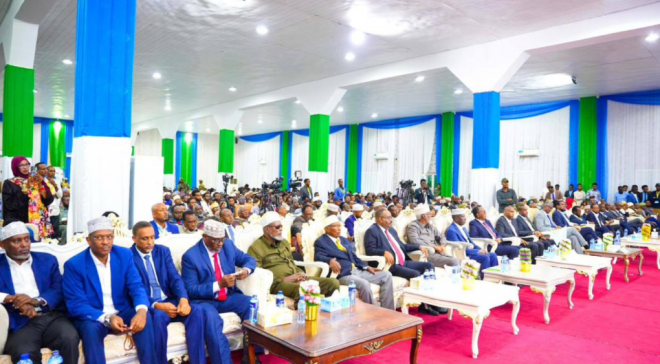The Somalia Federation: Crossing The Initial Hurdles
By Ismail A. Ismail (Geeldoon)
… "the path of federalism never runs smoothly. Sooner or later all will experience difficult corners of traverses". Ursula Hicks
The civil war in Somalia has not been without consequences. On the contrary, it has been cataclysmic in that it created long-lasting, if not permanent, fissures along clan lines, which to this day have not been healed. Though Siad Barre is blamed for promoting a Daarod hegemony while targeting the Hawiye and Isaaq, these latter forged, in turn, an anti-Daarod alliance and established their respective ‘liberation’ fronts – the USC and SNM. Furthermore, both fronts declined to join the Majerten SSDF, which predated them, because they could not trust a Daarod front, even though it was committed to and was actually fighting the Barre regime well before them.
Unlike the Ethiopian fronts, which were united under the umbrella of the EPRDF, the Somali fronts never even tried to open talks among themselves as to how they could merge and come up with a plan to heal the rifts between the clans and govern a united country post-Barre. Clan prejudice benumbed their minds, and as they shed more and more blood the national interest became more and more submerged in a welter of blinding hate. In the upshot, they went their own separate ways: the USC imploded and was sinking in a blood bath in what the International Community called later “The Triangle of Death”, the SNM secured the Isaaq-land, it being purely an Isaaq front, and the SSDF captured its own Majerten-land.
The SNM, however, moved quickly in 1991 to contrive a new ‘Somaliland’ based, from its own perspective, on the erstwhile ‘Somaliland Protectorate’ and declared secession. The Harti of Sool and Eastern Sanag felt insecure in a new ‘Somaliland’ where the Isaaq constituted a commanding majority, and led by a relatively well-armed Isaaq front (the SNM) which harbored ill-feelings towards the Daarod. In 1998 the SSDF countered by bringing together all the Harti sub-clans in a new administrative region called ‘Puntland’, which subsumed Sool and Eastern Sanag (both Harti areas), which were historically part of the former ‘Somaliland Protectorate’.
That was then. The reality today is that neither Puntland, nor ‘Somaliland’ is administratively integrated, or politically cohesive. The fronts are no more having thus been replaced by civil administrations, which blunted the sharp edges of clanism despite, inevitably, retaining its facade. As the years wore off, the situation has been perceptibly changing for the better, for time has a healing element. Rancor has given way to a greater social intercourse and continuing political, if at times acrimonious, dialogue.
But, we are by no means out of the woods as some facets of those ugly realities, which arrested progress, are still lingering. Surely, we have stepped out of that pitch darkness of the civil war period and entered the dawn of a new era: at least we are now plodding towards laying the foundations of a new Somali State. But, it might be a long dawn; and, alas, we may have to wait for many more years before the sun shines on our country again.
Ismail Ali Ismail ( Geeldoon)
Email: geeldoonia@gmail.com
Ismail Ali Ismail (Geeldoon) is a former Somali civil servant, UN staff and the author of,Governance, The Scourge and Hope of Somalia.
Read more on PDF Format -The Somali Federation : Crossing the Initial







